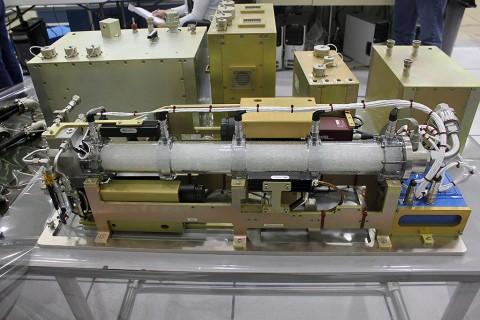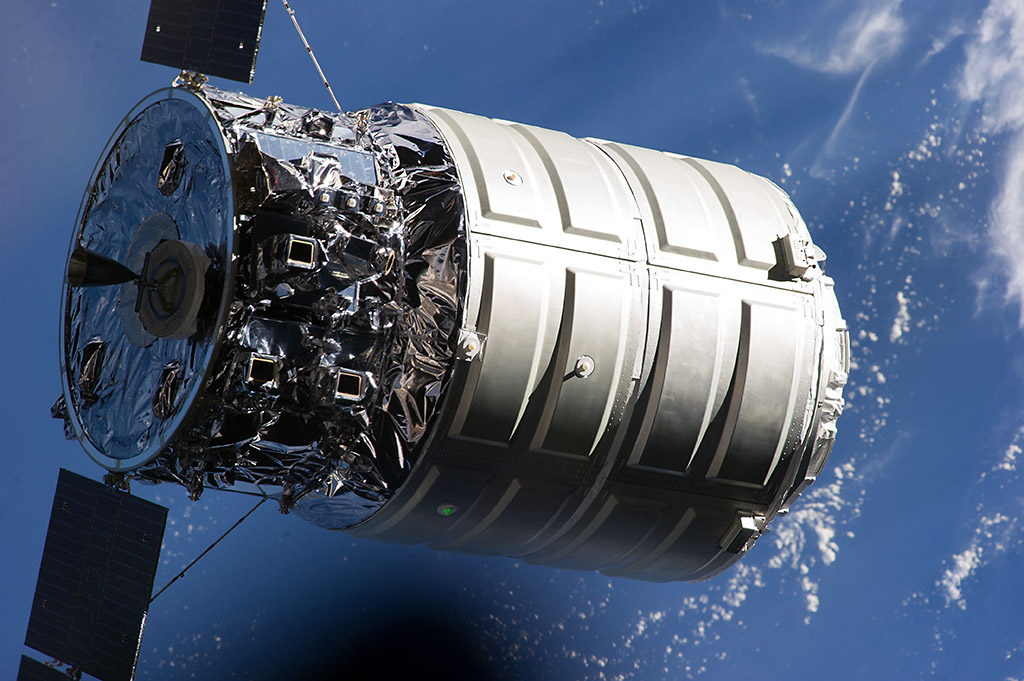Written by Andrea Dunn
International Space Station Program Science Office
NASA’s Johnson Space Center
 Houston, TX – NASA’s commercial partner Orbital ATK plans to launch its Cygnus spacecraft into orbit December 3rd, atop a United Launch Alliance Atlas V rocket for its fourth contracted resupply mission.
Houston, TX – NASA’s commercial partner Orbital ATK plans to launch its Cygnus spacecraft into orbit December 3rd, atop a United Launch Alliance Atlas V rocket for its fourth contracted resupply mission.
The flight, known as CRS-4, will deliver samples and equipment to the International Space Station for research investigations that will occur during current and future expeditions in the many science disciplines aboard the orbiting multi-disciplinary laboratory.
This delivery will support significant research being conducted off the Earth to benefit the Earth, including investigations in advanced and automated data collection and in the behavior of gases, liquids and burning textiles in microgravity.

SABL consists of a temperature-controlled chamber that can house a variety of passive or active experiments that can be automated or remotely operated by the crew members or by personnel in a remote operations center on the ground. SABL supports automated collection of experiment data from various sensors and from high-definition video.
It can display data on a touchscreen interface on the front of the payload or downlink data files and HD video streams to the ground for analysis by scientists anywhere in the world.
CRS-4 will also carry the Packed Bed Reactor Experiment (PBRE). This investigation studies the behavior of gases and liquids when they flow simultaneously through a column filled with fixed porous media.

The porous media or “packing” can be made of different shapes and materials that are used widely in chemical engineering as a means to enhance the contact between two unmixable fluid phases (e.g., liquid-gas, water-oil, etc.). Packed columns can serve as reactors, scrubbers, strippers, etc. in systems where efficient interphase contact is desired, both on Earth and in space.
Water recovery systems, fuel cells and other equipment on the space station use packed bed reactors, but currently none are designed to handle both liquid and gas at the same time. With improved understanding of how packed bed flow works in microgravity, scientists are able to design more efficient, lightweight thermal management and life support systems that use less energy, benefiting the space station and future long-duration missions.
The investigation is also of interest in many chemical and biological processing systems as well as many geophysical applications on Earth.
This investigation tests the hypothesis that with adequate ventilation, materials in microgravity, burn as well, if not better, than the same material in normal gravity with other conditions being identical. BASS-M will test ten different treated textiles at various air flow rates found in forced convection (heat transfer through external means versus natural means) in microgravity environments or in a free fall environment.
Scientists will evaluate and compare against normal terrestrial behavior each textile’s ability to self-extinguish. The BASS-M experiment will provide data on treated cotton fabrics in microgravity and could be used to screen materials for safe use in clothing and textiles in future missions.
Additionally, the launch cargo will include two Nodes satellites that will be deployed from the space station to demonstrate new network capabilities critical to the operation of swarms of spacecraft. They will demonstrate the ability of multi-spacecraft swarms to receive and distribute ground commands, exchange information periodically and autonomously configure a network by determining which spacecraft should communicate with the ground each day of a mission.
These and additional samples and equipment launched to the space station aboard CRS-4 enable science on the orbiting laboratory that continues to create “cyg”-nificant benefits off the Earth for the Earth and beyond.



